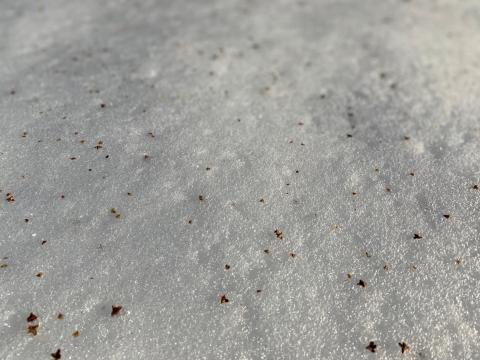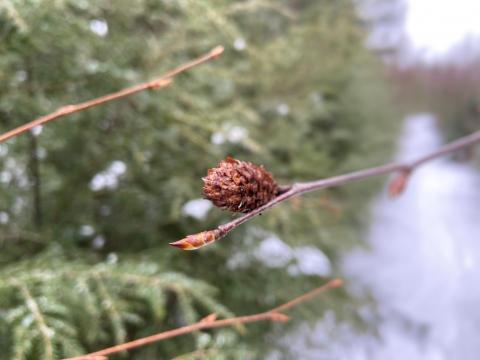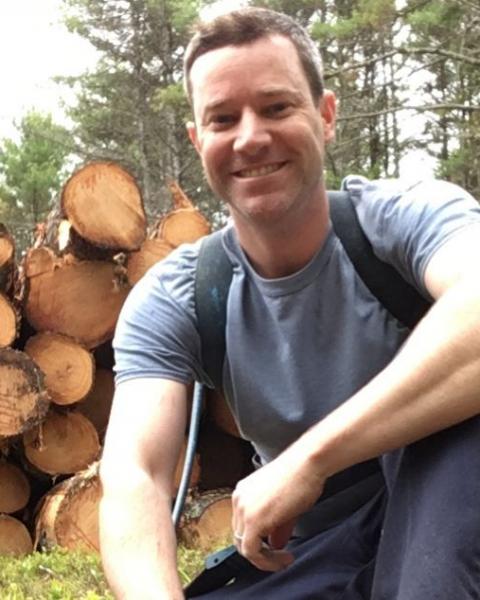The Mighty Birch Seed

Heading out my front door on a recent frigid and windy January morning, I noticed innumerable little specks skidding across the surface of the crusty snow. Upon inspection, I found that the specks were tiny, winged black birch (Betula lenta L.) seeds that had dropped from the trees along the edge of my yard. Tiny might not be an apt description of a black birch seed. In fact, there is usually around 650,000 cleaned (de-winged) black birch seeds per pound!1
Black birch strobiles (dry, cone-like fruits) develop from female catkins in late summer or fall, and the ripe seeds are primarily dispersed by the wind. And while most of the seeds are tucked under the snow waiting for the arrival of spring, some hang onto the tree and are blown onto the snow surface during the winter. If snow conditions are right, the seeds can catch a ride and be carried over 250 feet from the parent tree. That is more than three times farther than can be expected by wind dispersal alone.2

Also known as sweet birch, black birch is becoming more abundant where I work in southeastern New Hampshire. There are probably many reasons, including its ability to regenerate in small canopy gaps typical of low-intensity forest improvement harvesting, its adaptability to a variety of soil conditions, and its relatively high-resistance to deer browsing. Whatever the reasons, its unusual seed dispersal strategy must be helping.
Have a question about your woods? Contact your Extension County Forester today!
Do you love learning about stuff like this? Subscribe to the NH Woods & Wildlife Newsletter.
A quarterly newsletter providing private woodlot owners in New Hampshire with woodlot management news, pest updates, resources, and more.
1 Bonner, Franklin T.; Karrfalt, Robert P., eds. 2008. The Woody Plant Seed Manual. Agric. Handbook No. 727. Washington, DC. U.S. Department of Agriculture, Forest Service. 1223 p
2 Matlack, G.R. (1989). Secondary Dispersal of Seed Across Snow in Betula Lenta, a Gap-Colonizing Tree Species. Journal of Ecology, Vol. 77, No. 3, pp. 853-869.

